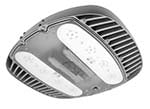The quality of light in industrial facilities plays a critical role. It enables efficient, accurate, and safe job performance.
Lighting affects not only productivity but also the safety and well-being of employees. It is essential to focus on light quality during design and implementation. Dangerous work settings, such as in the industrial sector, make this need even more critical.
Improving light quality with workers in mind.
The goal of improving light quality is complex. It should enhance visual performance, allowing employees to conduct their tasks well. A well-designed lighting system should promote visual comfort. Good lighting design reduces eye strain and discomfort associated with poor lighting conditions.
Additionally, quality lighting can create a positive perception of space. Moreover, the impact of lighting on health and well-being is increasingly recognized. Studies show that lighting can affect circadian rhythms, mood, and well-being.
Considering the characteristics of a light source is crucial.
Critical elements include color rendering index, luminance level, glare control, and lighting distribution. Balancing these deliverables can optimize visual performance and comfort. Workforce needs such as age and task requirements are important during the lighting design process.
Investing in high-quality lighting systems can yield significant benefits for industrial facilities. It increases productivity, improves safety, and enhances employee well-being. Lighting professionals should work with facility managers to focus on lighting quality. This consideration is essential during the design and implementation stages for challenging workplaces. This creates healthier workplaces and increases employee satisfaction.
Nemalux believes that safe and optimized illumination is critical to an industrial workplace to enhance visual performance and well-being. Tell us more about your industrial facility lighting projects.


